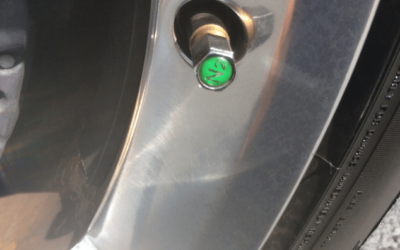Have you ever wondered what you could do to prolong the life of your tires? Tires can be quite expensive, so you want to get as much use out them as you can before getting them replaced. Also, proper tire maintenance is important to the safety of you and any passengers that you are driving with. Did you know that there are simple steps that you can take to preserve your tires? Follow the tips below to retain your safety and to save you the hassle and cost of replacing your tires often.
#1 Maintain Your Tire Pressure
It is important to keep your tire pressure in check. Tires pressure must be kept at the ideal amount because tires are rated at a particular pressure for a certain size load. Both under-inflation and over-inflation can also cause tires to wear in an uneven manner. This leads to a reduction in overall traction, less control over steering and lower fuel economy.
Use a tire-pressure gauge to measure each of your vehicle’s tires for optimal pressure. For the most accurate results, wait until your tires are cold. It is even better if you measure before it is driven at all on a particular day. Driving on tires allows them to build up heat, and the resulting expansion of gases inside the tire will change the internal pressure. This will cause a false reading.
#2 Keep Tires Out Of Direct Sunlight
Whenever possible, keep your vehicle’s tires out of the path of direct sunlight. Ultraviolet rays and radiant heat from the sun can destroy tires. Pyrometers have actually measured the temperature of the surface of a tire on a vehicle parked in direct sunlight as being as high as 135° Fahrenheit. This is extraordinarily detrimental to the strength of the rubber.
Direct sunlight cause cracks on surface and altering some of rubber properties triggering premature tire aging.
#3 Rotate Your Tires Regularly
Because tires can inadvertently wear out at different times, it is important to regularly rotate your front and rear tires. The reason for uneven wear between front and rear tires is because each performs distinctive jobs on a car. As a matter-of-fact, the functions of tires on a rear-wheel-drive car and a front-wheel-drive car couldn’t be more different.
If you choose to rotate your own tires, be sure to check your owner’s manual for proper instructions and the rotation pattern that the manufacturer recommends. If you are uncomfortable with doing this yourself, many muffler and tire shops offer a tire rotating service for a modest fee.
#4 See If A Wheel Alignment Is Needed
When your vehicle’s wheels are properly aligned, the car’s weight will be evenly distributed on each of the wheels. This is why you may need to re-align your wheels if there appears to be any sort of pull to either side when you’re attempting to drive straight ahead.

When your wheels are out of appropriate alignment, you will not only encounter a sideways drag and difficulty steering, but you will notice uneven tire wear. By aligning your tires, you will ensure that each will maintain a consistent angle with both the road and the axis of the opposing wheel. The alignment process will eliminate any outward or inward tilting and prevent the excess wear of affected tires.
#5 Always Park Six To Twelve Inches From The Curb
Try to stay six to twelve inches away from the curb at all times when parking. This will prevent you from hitting the curb while attempting to parallel park your car, and seriously damaging your wheels. Even running into a curb once could drastically damage your tires and alter your wheel alignment. If your steering wheel starts pulling hard in one direction after you hit a curb, you should check your alignment immediately. Depending on the impact, you should also check for holes on the wall of the tire.
These tips should help you squeeze a few more miles of use out of your tires. These are surprisingly simple steps, and, at their core, they are basically common sense solutions geared toward saving you time and money and maintaining your safety. If you follow the advice above, you should have no problem stretching the life of your current set of tires a while longer than usual.







